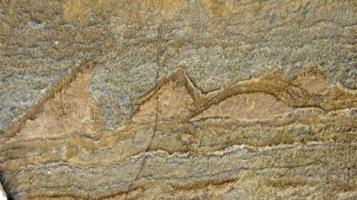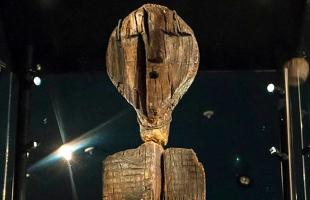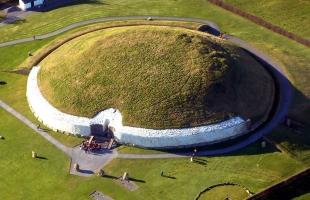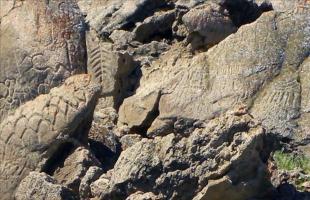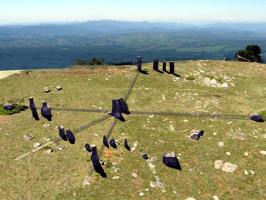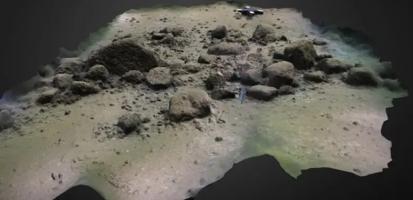Was Khambat the oldest civilization in the world?

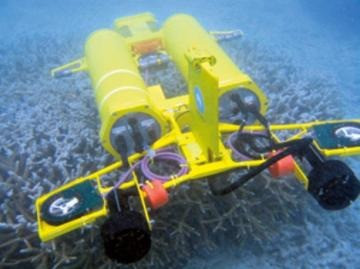
According to official archaeology, the oldest civilization in the world was that of the Sumerians, who prospered in modern-day Iraq 5,000 years ago. The majority of archaeologists and researchers believe that the preceding Neolithic cultures did not reach a level of evolution by which they can be called "civilization", that is, an organized, hierarchical society, based on agriculture, where there is a system that enforces respect the rules and where some groups of people dedicate themselves to the arts, be they plastic, pictorial or related to ceramics.
However, certain researchers around the world maintain that there were several antediluvian civilizations that were destroyed by the sudden rise of the seas, 11,500 years ago, just at the time of the melting of the glaciers (the universal flood, described in many books, including the Bible, the epic of Gilgamesh and the Mahabarata).
Indeed, some strange structures submerged at a depth of 5 to 600 meters were found in various parts of the oceans. I am referring to the walls of Bimini (Bahamian sea), to the enigmatic submerged constructions along the Guanahacabibes peninsula (Cuba), to the cyclopean walls located in the sea in front of the island of Yonaguni, in Japan, and to the lithic buildings discovered in the Gulf of Khambat, in the state of Gujarat, in India.
However, of all those mentioned, only in those located along the coast of Gujarat (including the submerged site of Bet Dwarka), were found several archaeological evidences, or man-made objects.
In 2000 India's National Institute of Marine Technology announced that it had found, on the seabed off the coast of the state of Gujarat, 40 meters deep, megalithic city-like structures. The discovery was confirmed a year later by Science and Technology Minister Murli Manohar Joshi, who stated that the submerged buildings are the remains of a city that was devastated by a sudden flood, and furthermore, the ruins were said to show a strong resemblance with those of Harappa and Mohenjo-Daro, ancient cities that date back to 2700 BC, belonging to the ancient Indus civilization.
Traditional archeology traces these ancient Hindu civilizations to the Neolithic culture called Mehrgarh (10,000 BC), which was followed, during the Bronze Age, by the Zhob culture. Indeed, after the excavations carried out in Queha, beautiful ceramics were found that illustrated stylized animals, such as dromedaries, and some statuettes representing the Mother Goddess, which can be compared with those of the Indus civilization.
However, according to some scholars, the origin of the Indus civilization must be sought in Khambat and its amazing finds.
There are two hypotheses as to why the area in front of the Gulf of Khambat is now submerged.
The first thesis refers precisely to the melting of glaciers around the world, which caused a sudden rise in the seas of approximately 120 meters. The second proposal, developed by some geologists, suggests that some tectonic movements of extraordinary scale caused the submergence of part of what was the coast of the sea called today the “Arabian”.
During the month of November 2001, other underwater explorations were carried out. Sonar was used to locate the bed of a river, now submerged, about ninety kilometers long, as well as strange perpendicular and parallel structures more or less 40 meters deep, about 20 kilometers distant from the current coastline.
During those searches, several ceramic objects, carved wood, some human teeth and several semi-precious objects, many of them pierced, were recovered. The pieces of wood were subjected to the carbon 14 test and were dated to 7500 BC.
According to the scholar Witzel, the fact of having found wood dated to 9500 years ago is not definitive proof that it was used by man exactly in that place, since it could have been dragged there by flooding rivers or avalanches. If it had been found embedded in a geological stratum, it could have been dated with greater certainty.
In 2003 and 2004, further underwater explorations were carried out and other ceramic objects were found.
The findings were sent to some Indian and European laboratories (Oxford and Hanover) and through the thermoluminescence method, they obtained dating from 13,000 to 31,270 years ago. The Indian geologist Shri Batrinarayan confirmed the authenticity of the discoveries, maintaining that the relics were analyzed with the X-ray diffraction technique. According to the scholar, the clay material used in the terracotta found underwater is typical of the area and was fired at 700 degrees to obtain ceramic.
Based on these discoveries, the sunken city of Khambat would be the oldest in the world, dating back 9.5 millennia.
It should be added that other scholars, however, skeptical of the conclusions of geologist Batrinarayan, maintain that the objects subjected to the dating procedure are not genuine ceramics produced by man, but simple clay that was consolidated over the centuries. There is a strong debate focused on some irregularly shaped objects that have some perforations in the central part.
Regarding this, Dr. Asko Parpola, professor of Ancient Indian History at the University of Helsinki, believes that it would be more appropriate to call the submerged place off the coast of Khambat a “Neolithic town,” but not civilization. At the very least, it is premature to jump to conclusions without having more precise and reliable information. Furthermore, Dr. Parpola also believes that, as the underwater currents are very strong in this area, it is very likely that the parallel lithic structures are the product of thousands of years of sand erosion and not artificial stone blocks erected by ancient men of the Neolithic to build their city. In addition, Parpola thinks that it would be good for an underwater archaeologist to carry out an analysis, since those responsible for the NIOT (National Institute Marine Technology of India), who carried out the investigations, are geologists and experts in underwater techniques, but they do not have specific archaeological training. Unfortunately, as I mentioned before, the area is dangerous since, due to the strong currents and murky water, it is not advisable for divers to go there, so robots must be used to recover the submerged material. This method may damage the vestiges, but as things stand now, it is the only possible recourse.
According to Iravatham Mahadevan, one of the world's greatest experts on ancient Vedic scriptures, we must be skeptical, but not pessimistic: the parallel and perpendicular structures that extend for kilometers cannot be a simple joke of nature, but are probably megalithic structures dating back to 7,500 BC. Furthermore, scholar Mahadevan also claims that sonar captured the image of a large rectangular structure that cannot be a natural formation.
Dr. Mahadevan, who expresses cautious optimism, maintains that current knowledge is not able to say whether the remains of Khambat represent the origin of the Indus civilization, but rather we can speak of a megalithic town that was submerged after strong tectonic turbulence, probably sudden.
When Dr. Mahadevan was asked if he trusted the carbon-14 dating, he responded that, according to him, the piece of wood dated to 9,500 years ago could have been transported from other places, while what most indicates the presence of man are some semi-precious stones, some of them pierced, a clear sign of human activity.
Another submerged site of great importance was studied by the diving archaeologist S. R. Rao in Bet Dwarka, also in Gujarat, where cyclopean submerged structures were found.
Bet Dwarka is an archaeological site known since 1930, but it was only in 1983 that the National Institute of Oceanography began carrying out specific and well-calculated research. It was found that the submerged city extends into six different sectors, approximately one kilometer from the coast. The submerged city of Bet Dwarka dates back to the 2nd millennium BC. Several ceramic objects were recovered, which, when subjected to the thermoluminescence test, were dated to 1528 BC. One of the strange things about Bet Dwarka is that some amphorae were found that may be related to Roman culture. Some researchers hypothesized that there was a shipwreck from Rome, while others maintain that the amphorae were obtained through some trade on the Silk Road.
All this proves that the level of the seas was much lower (approximately 120 meters), from the end of the last ice age until the 1st millennium BC, and the submerged places, which have not yet been studied, are dozens in the world, if not hundreds.
The problem with Khambat is that the site is about 40 meters deep, the currents are strong and the water extremely murky, making any attempt to send divers and take photographs very difficult.
For now the mystery of Khambat remains as it is, but perhaps in the following years, when the techniques of recovering vestiges and underwater archeology are perfected even in seabeds that are difficult to access, we will be able to know more about the ancient Indus civilization and its probable origins, which are now submerged.
YURI LEVERATTO









